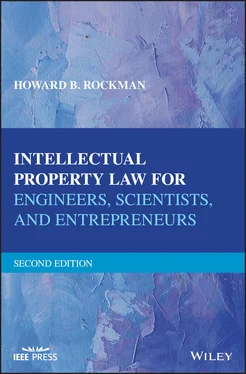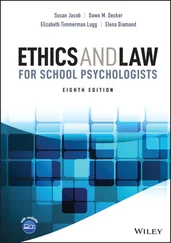Deere became busy working in his new shop shoeing horses and oxen, and making and repairing farm equipment. From repairing farm equipment, Deere discovered that the rich, fertile soil of the Midwest prairie would stick to the plow bottoms. Plows designed for the light, sandy New England soil could not handle cutting and turning the Midwest soil. Farming in the Midwest became a slow, labor‐intensive task, and many farmers considered moving further west or back east.
Deere thought about this problem, and decided if he made a plow that was highly polished and shaped in the right way, it would scour itself and the prairie soil would not stick to the plow. Deere, with help from his partner, Major Leonard Andrus, made a plow to these specifications in 1837. The cutting part of this plow was constructed of steel, cut from an old sawmill blade and shaped by bending the blade over a log. The moldboard, used for lifting and turning the soil, was made of wrought iron and polished on the upper surface to prevent clogging. The plows were successfully tested on a farm near Grand Detour.
His new plow was very successful‚ and Deere, instead of making them as they were ordered, would produce a supply of plows and go out into the country and sell them. This approach was completely different from previous farm implement sales methods, and word quickly spread of Deere’s “self‐polishers.”
Deere encountered a few problems, however. Living in the frontier, there were few banks, poor transportation, and a scarcity of steel. Deere’s first plows were made from any steel he could find. In 1843, Deere ordered a shipment of specially rolled steel from England. This shipment had to cross the Atlantic Ocean, go up the Mississippi and Illinois Rivers, and go forty miles in a wagon to reach Deere’s shop in Grand Detour. In 1846, cast steel plows rolled in Pittsburgh and shipped to Moline, Illinois‚ solved this problem.
The Deere plow was so successful that by 1846, Deere and his partner were selling one thousand plows a year. Deere decided to sell his interest in the Grand Detour business to his partner, Leonard Andrus. He then organized a plow company in Moline, Illinois‚ in 1848, taking advantage of the water energy and transportation provided by the Mississippi River. He began experimenting with imported English steel, and had a cast steel plow made for him in Pittsburgh. By 1855, he was selling more than 13,000 such plows a year. He obtained his first patent for a walk‐behind, horse‐drawn plow in 1865, Patent No. 46,454.
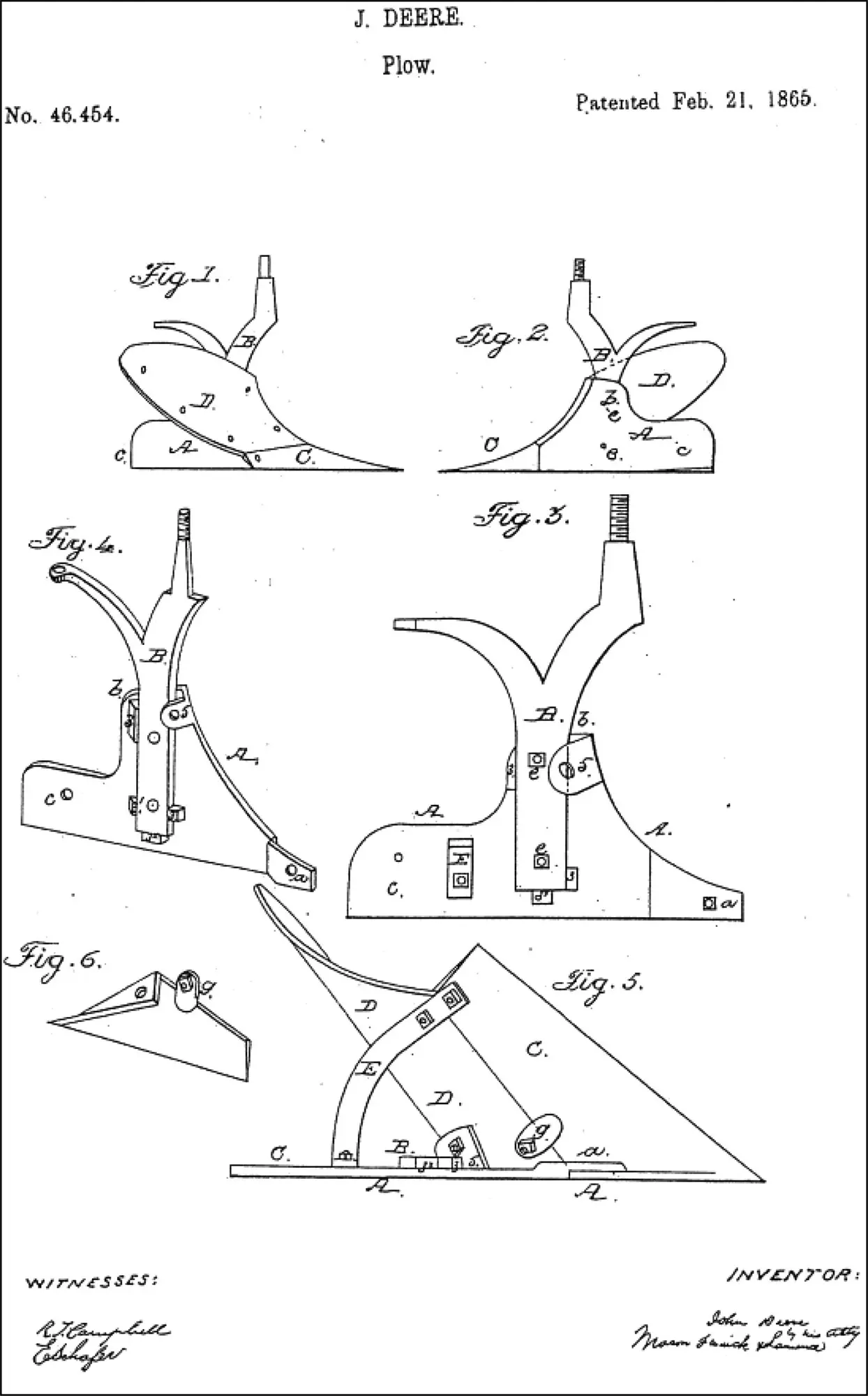
INVENTORS AND INVENTIONS
Erastus Brigham Bigelow
POWERED CARPET‐MAKING LOOMS
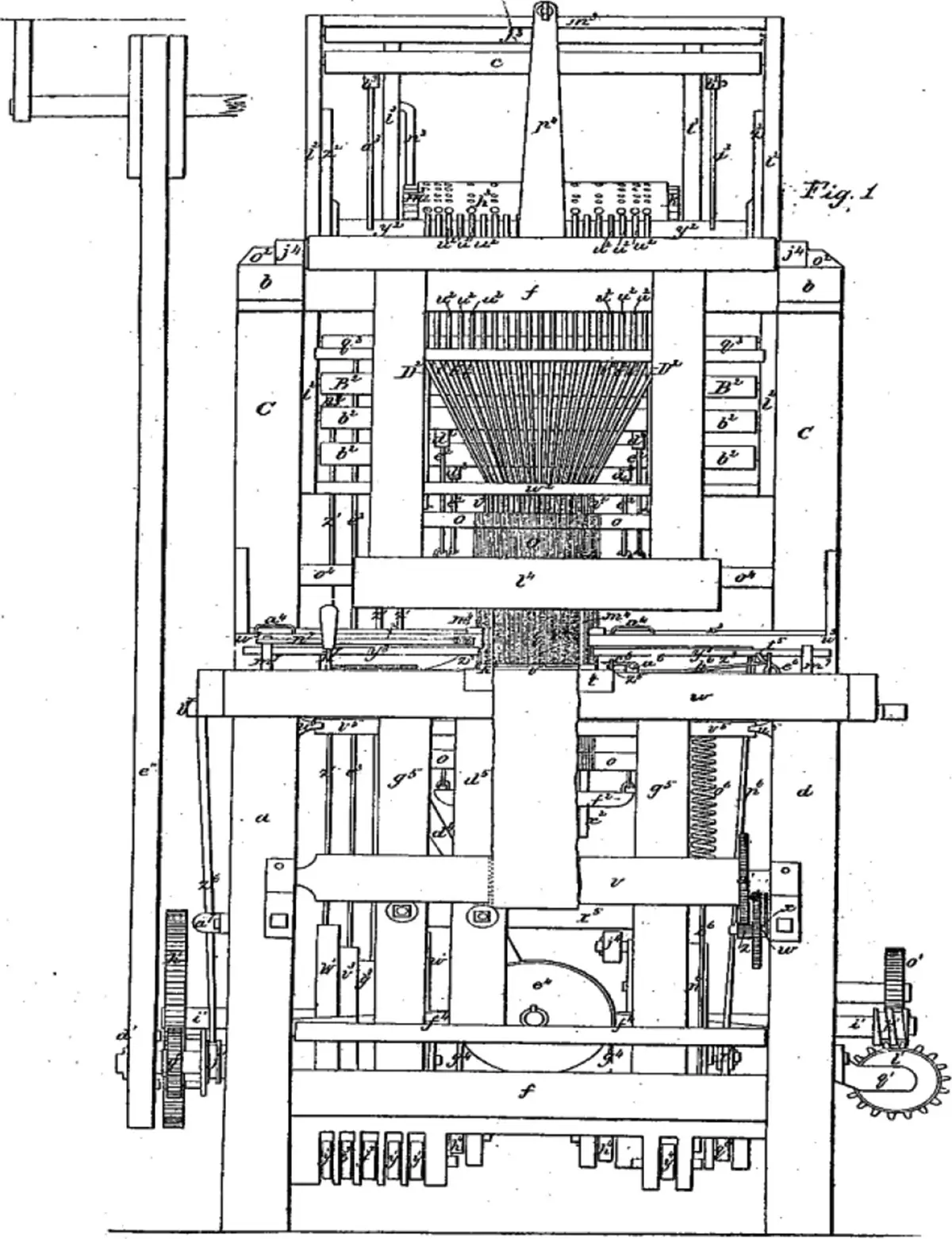
Erastus Brigham Bigelow was born in 1814, the son of a cotton weaver. Early in his life, he worked in his father’s business, which was not very successful. He then turned his attention to inventing, and before reaching the age of 18, had invented a hand loom for weaving webbing used in suspenders. Bigelow, at one time, was studying medicine at the Leicester Academy, intending to go to Harvard University. However, his financial situation deteriorated, and he left school to devote his time to inventing. In 1837, he developed a power loom for weaving lace used in coach lights. Bigelow then saw that the ideas behind his power loom could be modified to manufacture other fabrics, such as gingham. In 1839, he contracted to produce a power loom capable of weaving two‐ply ingrain carpets, which had previously been woven only by a handloom producing 8 yards of material a day. With his first power loom, Bigelow succeeded in obtaining 10 or 12 yards daily, which constantly increased through improvements until 25 yards per day was regularly achieved. However, the manufacturer of Bigelow’s first power loom failed, which resulted in Bigelow earning no profit from his first invention.
Later in 1841, he invented a power loom for weaving pictorial tapestry and velvet tapestry carpets, which was his most important invention and drew vast amounts of attention at the World’s Fair in London in 1851. The town of Clinton, Massachusetts‚ owed its growth in manufacturing importance to Bigelow, as the town was home to the Coach Lights Works and The Lancaster Quilt Company, which companies used the direct results of his inventions.
Bigelow, his brother, and other investors founded the Clinton Company in about 1838, to operate Bigelow’s looms and produce carpets. The Clinton Company later became the Bigelow Carpet Company. Central Massachusetts had abundant waterpower, which was perfect for operating Bigelow’s power looms. The factory jobs his loom created attracted a diverse group of Irish, English, Scottish, and German immigrants, as well as women from New Hampshire and Vermont.
Over a span of several decades, Erastus Bigelow created and developed increasingly faster and more capable power looms, resulting in rugs and carpets becoming more affordable. He obtained patents on approximately 35 looms used in the manufacture of carpets in the United States and England. Prior to Bigelow, fine rugs and carpets were accessible only to the wealthy, but Bigelow’s inventions enabled ordinary consumers to enjoy the luxury of heavily textured rugs in their homes. Within a year of the introduction of Bigelow’s powered loom, production of carpets in the United States doubled. He was recognized during his lifetime as the inventor of all the basic machinery for carpet and tapestry weaving. Bigelow was also nominated at one time, but not elected, for the position of Senator from the Commonwealth of Massachusetts.
In 1861, Bigelow was one of the 21‐member committee that created the Massachusetts Institute of Technology. Bigelow’s first automatic powered carpet loom is on display today in the Smithsonian Institution in Washington, D.C.
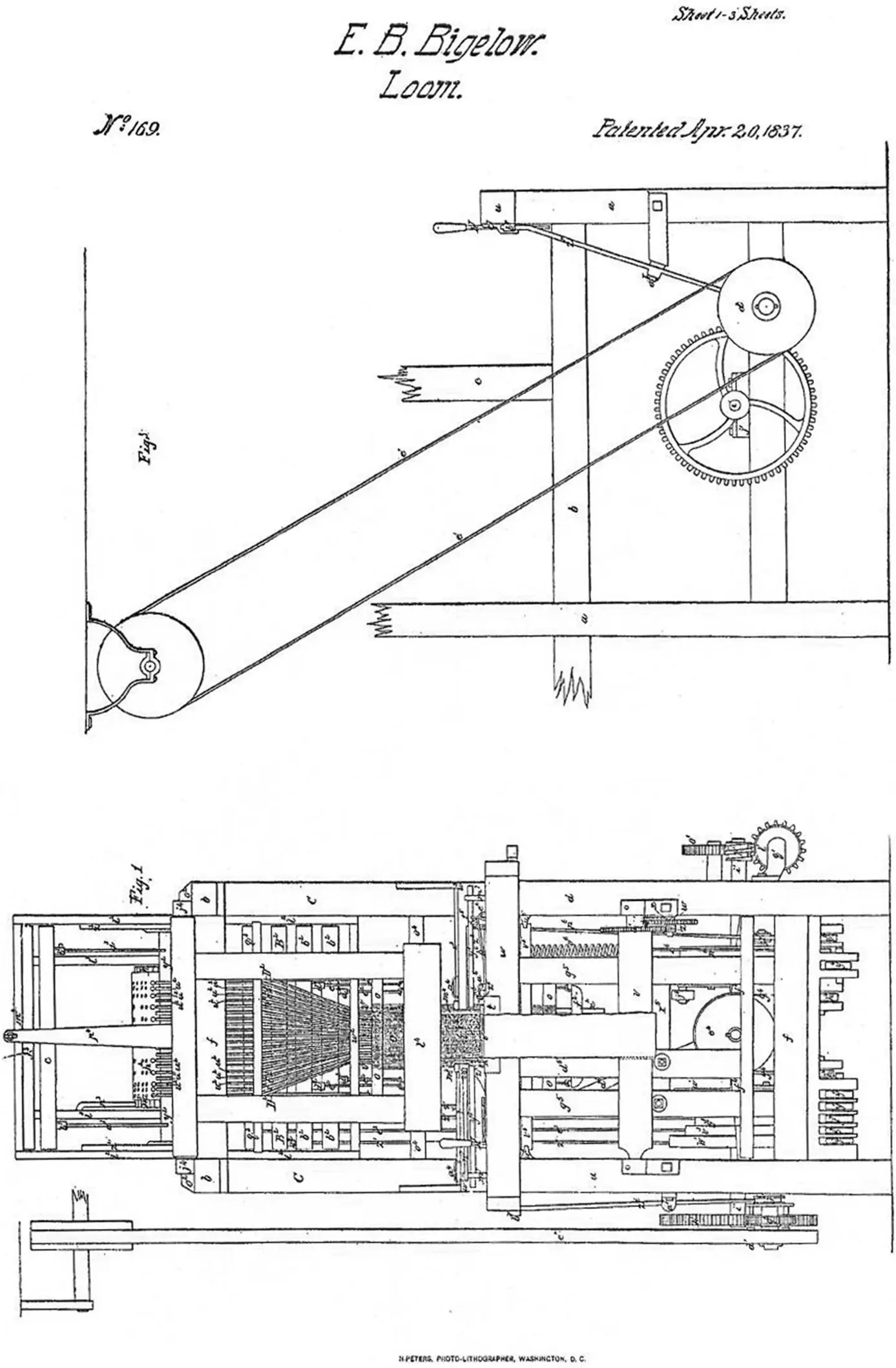
5 Novelty—The Invention Must Be New
5.1 STATUTORY REQUIREMENTS
Starting a development project, the engineer or scientist has at hand the full wealth of known prior technology related to the goals of the project. This is what is defined as the “prior art.” The developer knows, however, that the amassed knowledge of the prior art cannot solve the current problem; the prior art must be advanced to reach the current goals of this new development project. Thus‚ the inventor toils until an advance over the prior art allows the new goal to be reached. At project’s end, the inventor’s advanced structure, and its function or method are measured against the state of the prior art to establish the novelty of the advance, and to ensure that such an advance would not be obvious, given the teachings of the prior art. When the advance satisfies these criteria, patentable invention is made out, and a meaningful patent can be obtained to provide exclusive rights to the owner of the invention, as long as the other criteria for patentability are satisfied.
5.1.1 Time Limits for Filing a Patent Application
The time at which a patent application is initially filed is important as it provides a benchmark applicable to the activities of the inventor and to the inventions of others. By way of example, consider a modified version of history regarding the discovery of the wheel as a way of explaining some of the time limits for patentability.
Читать дальше
